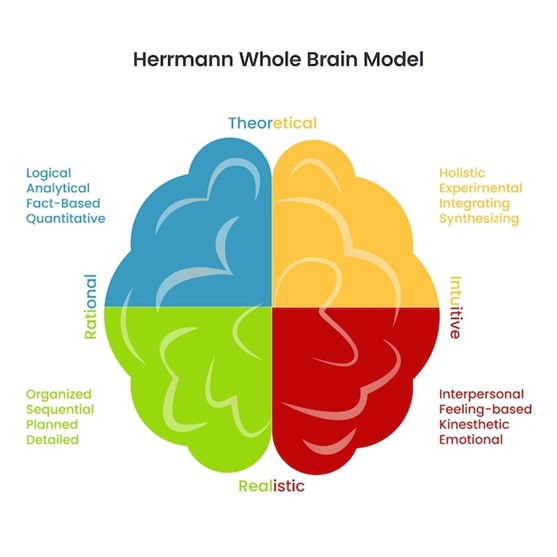Effective communication is an essential component of workplace health and safety. As an expert in the field, we understand the importance of promoting a safe and compliant work environment. Our comprehensive management WHS communication strategy and WHS communication plan ensure that your organization has the necessary tools to effectively communicate and manage safety protocols. With our expertise, you can establish clear and concise communication channels that promote understanding, enhance safety culture, and reduce workplace incidents. Trust us to provide the expert solutions you need to prioritize workplace health and safety.
Effective communication plays a crucial role in promoting workplace health and safety. It is the foundation upon which successful implementation of health programs and the overall well-being of employees depend. In this comprehensive guide, we will explore the significance of communication in workplace health and safety, strategies to improve communication, and how to tailor communication to different thinking styles for better understanding and collaboration.
Understanding Management WHS Communication
Management WHS communication refers to the process of organizing and ensuring that employees are well-informed about the requirements and objectives of a workplace health program. It involves effectively relaying information, fostering open dialogue, and establishing a culture of health within the organization. By maintaining regular and consistent communication, employers can increase awareness, trust, and participation in health promotion initiatives.
Developing a Communications Plan
To ensure the success of a workplace health and safety program, it is essential to develop a comprehensive WHS communications plan. This plan serves several purposes, including increasing awareness of the program, promoting workplace health and safety, and improving employee engagement. The plan should consider the target audience, their preferred communication channels, and cultural competency to ensure effective message delivery.
Tailoring Communication to Different Thinking Styles
People have different thinking preferences, which influence how they prefer to communicate and be communicated with. Understanding and adapting to these preferences can bridge communication gaps and enhance collaboration. According to the Whole Brain® framework, individuals can be categorized into four thinking styles: analytical, practical, relational, and experimental. By recognizing these styles, managers can tailor their communication to effectively engage and connect with their employees.
- Analytical Thinkers: Analytical thinkers prefer logic, facts, and data. When communicating with them, provide clear and concise information supported by evidence and numbers.
- Practical Thinkers: Practical thinkers value organization and detailed plans. Present information step-by-step and ensure you have all the necessary details to support your points.
- Relational Thinkers: Relational thinkers make decisions based on emotions and value interpersonal relationships. Engage them through stories and create an open forum for questions and discussions.
- Experimental Thinkers: Experimental thinkers are imaginative and enjoy exploring new ideas. When communicating with them, link information to the bigger picture and emphasize the “why” behind it.
By being aware of these thinking styles and adapting communication strategies accordingly, managers can foster better understanding, engagement, and cooperation among employees.
Strategies for Effective Communication
Implementing effective communication strategies is crucial for promoting workplace health and safety. Here are some strategies to consider:
- Targeted Messaging: Deliver messages to specific employee groups using targeted communication channels to ensure relevant information reaches the intended audience.
- Open Dialogue: Encourage open communication and create a safe space for employees to express their concerns, share feedback, and contribute to decision-making processes.
- Accessibility and Language Considerations: Accommodate employees with disabilities and diverse language preferences by providing accessible communication materials and offering translations when necessary.
- Regular Feedback: Establish a feedback mechanism where employees can provide input, report potential hazards, and suggest improvements to enhance workplace safety.
- Use of Technology: Leverage communication technologies such as mobile apps, intranets, and collaboration platforms to facilitate seamless and efficient information sharing.
- Training and Education: Provide training programs and educational resources to enhance employees’ health literacy and ensure they have the necessary knowledge to make informed decisions.
- Recognition and Celebration: Highlight and celebrate employee success stories to motivate others and reinforce positive health-related behaviors.
- Consistency and Clarity: Ensure consistent and clear messaging throughout the organization, aligning communication efforts with the goals and objectives of the workplace health program.
- Continuous Improvement: Regularly assess the effectiveness of communication strategies, gather feedback from employees, and make necessary adjustments to enhance communication practices.
By incorporating these strategies into a comprehensive communications plan, organizations can create a culture of health, improve safety outcomes, and promote overall employee well-being.
Benefits of Effective Management WHS Communication
Effective management communication brings numerous benefits to both employees and the organization as a whole. Some key benefits include:
- Greater Efficiency: Good communication enhances information flow, reduces miscommunication, and increases productivity and organizational efficiency.
- Employee Performance and Satisfaction: Clear communication of goals and expectations improves employee performance and satisfaction, leading to higher engagement and retention rates.
- Reduced Turnover: Effective communication fosters positive relationships between managers and employees, reducing employee turnover rates and associated costs.
- Attractive Workplace: A reputation for good communication and employee support makes the organization an attractive place to work, attracting top talent and enhancing the company’s brand image.
- Improved Customer Relationships: Effective communication with employees translates into better customer interactions, leading to improved customer satisfaction and loyalty.
By investing in improving management communication, organizations can create a positive work environment, retain top talent, and enhance overall business performance.
Incorporating Whole Brain® Thinking for Effective Communication
Whole Brain® Thinking offers a framework for understanding and adapting to different thinking styles, enabling more effective communication and collaboration. By recognizing the thinking preferences of individuals and adjusting communication styles accordingly, managers can bridge communication gaps and promote better understanding within their teams.
To implement Whole Brain® Thinking, organizations can utilize the Herrmann Brain Dominance Instrument® (HBDI®), a powerful tool for assessing thinking preferences. By understanding their own thinking style and those of their team members, managers can adapt their communication strategies to ensure better engagement and comprehension.
By embracing Whole Brain® Thinking and incorporating it into workplace communication practices, organizations can create a more inclusive, collaborative, and effective work environment.
Conclusion
Effective communication is crucial for promoting workplace health and safety. By developing a comprehensive communications plan, tailoring communication to different thinking styles, and implementing effective communication strategies, organizations can foster a culture of health, improve safety outcomes, and enhance overall employee well-being. Incorporating Whole Brain® Thinking can further optimize communication practices and bridge communication gaps within teams. By prioritizing effective communication, organizations can create a safe, supportive, and compliant work environment for all employees.
Are you ready to take workplace health and safety to the next level? Look no further than our expert team, who understands the importance of effective communication in creating a safe and compliant work environment. We have developed a comprehensive management WHS communication strategy and plan that will equip your organization with the necessary tools to effectively communicate and manage safety protocols. Our expertise in this field will enable you to establish clear and concise communication channels that will promote understanding, enhance safety culture, and ultimately reduce workplace incidents. Our management WHS communication strategy and plan are designed to address the specific needs of your organization. We understand that every workplace is unique, which is why we tailor our approach to fit your requirements. Whether you need to communicate important safety information to a large team or establish protocols for reporting incidents, our strategy and plan will provide you with the framework you need to effectively communicate and manage workplace health and safety. With our expertise on your side, you can rest assured that your organization will have the necessary tools to promote a safe work environment. Our comprehensive management WHS communication strategy and plan will equip you with the knowledge and resources to effectively communicate safety protocols to your team. By establishing clear and concise communication channels, you will foster a culture of understanding and collaboration, leading to reduced workplace incidents and improved overall safety. Don’t wait any longer to prioritize workplace health and safety. Trust our team of experts to provide you with the expert solutions you need. With our management WHS communication strategy and plan, you can take proactive steps towards creating a safe and compliant work environment. Contact us today and let us help you transform your workplace into a model of effective communication and safety excellence.
Revitalize your workplace and prioritize safety with our expert communication solutions. Unlock the power of Whole Brain® Thinking and bridge communication gaps within your teams. Contact us now for WHS and Training Compliance Solutions that will transform your organization.












